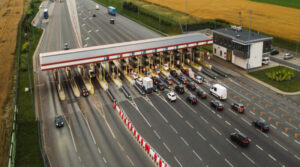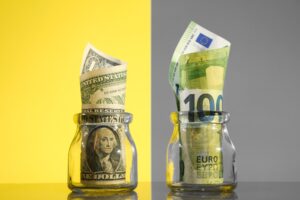
Express Insurance (Kyiv) collected insurance premiums totaling UAH 269.8 million in January-March 2025, which is 41.3% more than in the same period of 2024, according to the insurer’s website. The increase in insurance premiums was made possible by the growth in new customers and a steady increase in the number of contracts concluded compared to the previous year.
Thus, premiums under CASCO contracts for this period amounted to UAH 179.6 million, which is UAH 27.9 million, or 18.4%, more than in the same period of 2024, under MTPL – UAH 83 million (+51.4%), and under other types of insurance – UAH 7.2 million.
In January-March 2025, the company’s total insurance claims amounted to UAH 96.8 million.
Express Insurance was founded in 2008 and is part of the UkrAVTO group of companies. It specializes in motor insurance. The insurance company’s consistently high claims settlement rate is ensured by optimal interaction with partner service stations. Since April 2012, Express Insurance has been an associate member of the Motor Transport Insurance Bureau of Ukraine.

On May 1, 2025, Hungary will introduce restrictions on the movement of freight transport throughout the country.
The Embassy of Ukraine in Hungary officially announces that, in connection with the public holiday declared by the Hungarian side, restrictions will be imposed on the movement of trucks and combined transport vehicles with a maximum permissible weight of over 7.5 tons on the territory of Hungary on Thursday, May 1, from 6:00 a.m. to 10:00 p.m.
We recommend that you take this information into account when planning your trips and international transport.

Issue No. 2 – April 2025
The purpose of this review is to provide an analysis of the current situation on the Ukrainian currency market and a forecast of the hryvnia exchange rate against key currencies based on the latest data. We look at current conditions, market dynamics, key influencing factors, and likely scenarios.
Analysis of the current situation
At the end of April, Ukraine’s currency market showed that the main trends observed in the first half of the month remained unchanged: relative stability in the US dollar segment and continued strengthening of the euro against the hryvnia.
The key differences in April’s dynamics were a shift in the balance of supply and demand in favor of the hryvnia, a decrease in average daily demand for currency from the population, and smoother market behavior against a backdrop of moderate inflation and continued external support.
Key drivers:
Ø The dollar exchange rate remains stable with a moderate tendency to appreciate in favor of the hryvnia amid excess cash supply and global weakening of the dollar.
Ø The euro continues to appreciate under the influence of global processes, trade conflicts, and attempts by the new US administration to exert direct verbal pressure on the Fed, while demand for the euro continues to grow in Ukraine.
Ø The overall state of the currency market is characterized by high liquidity and low volatility in the dollar segment, while the euro segment is showing nervous growth with clear signs of speculative activity.
Domestic factors
Ø The National Bank of Ukraine maintains a policy of soft flexibility, keeping the discount rate unchanged and controlling the official exchange rate. The spread between the official and market exchange rates of the dollar remains minimal, while in the euro segment it is widening.
Ø Household activity in the cash market has been declining for the third month in a row: average daily demand fell from $41 million in February to $17 million in April. This indicates a decline in panic sentiment, market saturation, and/or the exhaustion of household purchasing power amid weak economic growth. Another factor could be the spring holiday cycle, which is a traditional period for selling foreign currency savings to celebrate and finance short-term vacations.
Ø At the same time, structural tensions remain, with imports exceeding exports by a factor of two, which remains a factor in the “washout” of foreign currency liquidity from the country. However, at the current stage, this can be fully offset by international assistance, which is expected to cover Ukraine’s foreign currency needs.
Ø The National Bank claims to have stable control over inflation expectations. Although March inflation peaks at around 15-16% annually, it is expected to decline to 8.7% year-on-year in the summer months, which, combined with the summer slowdown in business activity, will help reduce the population’s focus on currency. As a result, this may reduce the speculative motivation of currency market operators.
External factors
Ø At the global level, the main source of turbulence remains the trade wars initiated by the Trump administration, which have increased the risks of deglobalization and a weakening of the dollar due to its declining role as a reserve and settlement asset.
Ø This uncertainty is pushing global investors to invest or hedge through safe-haven assets such as gold, the Swiss franc, the Japanese yen, and the euro, which is currently capable of acting as a stabilizer.
Ø Additional pressure on the dollar came from Donald Trump’s open demand that the US Federal Reserve immediately lower its key interest rate, which created the risk of reducing the Fed’s independence and triggered a decline in bond yields and a fall in the US currency to its lowest level in six months.
General conclusions:
Ø The hryvnia remains stable despite external pressure and internal imbalances. Thanks to regular financing of the budget deficit and financial assistance from foreign partners, the market remains balanced.
Ø The dollar will remain in a narrow range, while the euro will continue to grow, maintaining high volatility.
Ø The cash currency market is in a phase of saturation, and the decline in demand for currency gives grounds to speak of relative market predictability.
Ø Speculative risks in the EUR/UAH pair are increasing — businesses should take into account possible short-term declines or impulsive jumps when planning operations.
Overview of dynamics and forecast of exchange rates
US dollar exchange rate
The dollar exchange rate against the hryvnia remains within a stable narrow corridor — from 41.10 to 41.80 UAH/USD with minimal volatility. In April, the market showed synchronization between the market and official exchange rates, which reduces risks for businesses and consumers. Revaluation pressure is intensifying amid declining demand from the population and increased supply of dollars.
During the second half of April, the dollar exchange rate remained stable, without sharp fluctuations. The lowest values were observed within the range of 41.10–41.35 UAH/USD for purchases, while sales remained within the range of 41.57–41.85 UAH/USD throughout the entire period.
Our short-term forecast for the dollar exchange rate, provided in the previous review, was fully confirmed within standard market deviations. The exchange rate dynamics in the dollar segment indicate high current predictability of the domestic market.
A distinctive feature of the period was the gradual smoothing and narrowing of the spread between buying and selling rates, indicating an increase in currency liquidity and a reduction in tension in the cash market. Other notable features of the second half of April included the movement of market exchange rates in line with the official NBU rate and with an almost equal spread between buying and selling rates. This indicates the effectiveness of the National Bank’s policy of smoothing out situational fluctuations, which reduces volatility and contributes to the formation of stable expectations among market participants.
Global factors also support the stability of the dollar in Ukraine — despite the weakening of the dollar on world markets, these processes are not being transmitted to domestic risks thanks to currency reserves and the flexibility of the NBU’s policy. Global processes have not created new pressure on the hryvnia, but in the medium term they may become a driver of capital outflows from Ukrainians and businesses from the dollar.
Forecast for the near term:
Euro
In the second half of April, the euro continued to rise against the hryvnia, confirming the previously observed upward trend. As we predicted in our previous review, market quotes confidently crossed the 47 UAH/EUR mark, and by the end of April, the average cash euro exchange rate consolidated at 48.00 UAH/EUR, This allowed domestic Ukrainian investors in euros to receive an exchange rate premium of 1.6 to 2.4 UAH per euro from the beginning of the month to the end of April.
Particular attention should be paid to the change in the spread between buying and selling rates. While at the beginning of the month the spread remained within 60–70 kopecks, by the end of April it exceeded 1 UAH for a number of cash currency market operators and reached 1.3–1.5 UAH for some operators. This is a sign of growing market nervousness and heightened expectations of further volatility. Market operators are trying to factor into prices the risks of a possible further strengthening of the euro or a correction amid speculative activity.
Another important signal is the significant difference between market rates and the official NBU rate. The euro exchange rate set by the regulator lags behind market values by an average of 30–50 kopecks, which is an indicator that the market is responding more quickly and flexibly to global currency trends, in particular the strengthening of the euro against the US dollar. The official dynamics are moving by inertia, while currency market operators are already factoring expectations of further changes into their quotes.
This lead indicates a growth in the premium for holding euros, which are increasingly being used not only as a means of payment but also as a savings instrument and, in some cases, as an attempt to profit from global turbulence.
Forecast:
Recommendations for businesses and investors
The dynamic situation on the markets prompts us to maintain our approach of dividing our recommendations into two separate blocks:
Ø basic recommendations — will help you avoid currency risks or minimize losses;
Ø updated recommendations — will help you navigate the revision of your investment and savings strategies.
Basic recommendations that remain relevant
Diversification of the currency portfolio is a basic strategy.
The euro is showing volatility and growth potential, while the dollar is weak against the backdrop of global events. It is recommended to keep part of your assets in euros, especially if you have corresponding liabilities. The dollar is a short-term liquidity and hedging tool.
Maximum liquidity is an unconditional priority.
All your currencies should be easily accessible for quick maneuvering — this is key given the global turbulence and political risks.
Keep the hryvnia in functional amounts.
The hryvnia remains stable, but the inflationary background and potential exchange rate risks in Q2–Q3 2025 do not allow for large hryvnia surpluses. If possible, avoid tying hryvnia liquidity in instruments with fixed terms or without the possibility of revising the yield.
Updated and supplemented recommendations
Change in currency share in the portfolio: smooth migration from the dollar to the euro
It is advisable to gradually rebalance the portfolio towards the euro. It is increasingly used in settlements and potentially offers a better exchange rate premium. However, turbulence in international currency markets requires constant monitoring of significant news and events, while not succumbing to the influence of sensational headlines and herd behavior. Only investors with nerves of steel, a cool head, and a clear strategy will emerge from the currency storm with profits or minimal losses.
Have a margin of safety and hedge your risks
Build buffers for forward exchange rate fluctuations: despite the upward trend of the euro and the downward trend of the dollar in the short term, there are “dips” and “bumps” in this pair and in relation to the hryvnia, which can cause losses or unexpected expenses.
Pay close attention to spreads — they are an indicator of market sentiment and a trend forecast
A widening spread on the euro is a signal that the market is nervous and expecting changes. At such times, it is better to avoid speculation and not make decisions under the influence of emotions. For experienced currency speculators, this is an excellent field and a good time for productive maneuvering, but for everyone else, there are risks of losses. The same applies to the dollar — reduce your focus on exchange rates and analyze spreads.
Scenario planning and regular reassessment
The market will continue to be turbulent for an indefinite period of time. Have alternative scenarios for currency behavior, especially for Q3–Q4, when a new devaluation cycle is most likely to begin.
This material has been prepared by the company’s analysts and reflects their expert, analytical, and professional judgment. The information presented in this review is for informational purposes only and should not be construed as a recommendation for action.
The company and its analysts make no representations and assume no responsibility for any consequences arising from the use of this information. All information is provided “as is,” without any additional guarantees of completeness, timeliness, or updates or additions.
Users of this material should independently assess the risks and make informed decisions based on their own assessment and analysis of the situation from various available sources that they themselves consider sufficiently qualified. Before making any investment decisions, we recommend consulting with an independent financial advisor.
REFERENCE
KYT Group is an international multi-service FinTech company that has been successfully operating in the non-bank financial services market for 16 years. One of the company’s flagship activities is currency exchange. KYT Group is one of the largest operators in this segment of the Ukrainian financial market, is included in the list of the largest taxpayers, and is one of the industry leaders in terms of asset growth and equity capital.
More than 90 branches in 16 major cities of Ukraine are located in convenient locations for customers and are equipped with modern equipment for the convenience, security, and confidentiality of each transaction.
The company’s activities comply with the regulatory requirements of the NBU. KYT Group adheres to EU standards of operation, with branches in Poland and plans for cross-border expansion into European countries.

Global demand for gold, excluding over-the-counter (OTC) transactions, amounted to 1.31 thousand tons in the first quarter of 2025, which is 16% higher than the result for the same period last year, according to the World Gold Council (WGC). Demand for jewelry fell to its lowest level since the COVID-19 pandemic in 2020 due to high prices. However, a sharp influx of gold into ETFs increased investment demand 2.7 times to 552 tons, the highest level since the first quarter of 2022. Demand for coins and bars also remains above average.
Gold production reached a record high for the first quarter of 856 tons. Overall, supply grew by 1% to 1,206 thousand tons. The market deficit was covered by OTC.